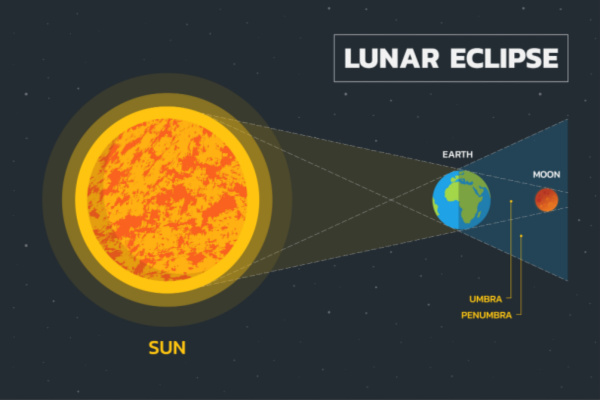With November, we take steps closer to the solstice. In the northern hemisphere, winter approaches in earnest; in the southern, the sun is welcomed back and temperatures continue to rise. The November night sky this month is also a time of astronomical activity, with active meteor showers, planetary close approaches, and even a few extra astronomical events we don’t get every month.
According to the Space Tourism Guide, November kicks off with a bang – despite the first event in the November night sky not taking place until a week into the month. On the night of November 8th (or 9th, depending on your location), there will be a total lunar eclipse across much of the western hemisphere (and part of the eastern hemisphere, too!).
A total lunar eclipse takes place when the Earth comes between the Sun and the Moon and its shadow covers the Moon. Eclipse watchers can see the Moon turn red (known as a Blood Moon) when the eclipse reaches totality.
For most those viewing from the western hemisphere, the lunar eclipse can be seen early on the 8th; if you’re viewing in eastern hemisphere, it will be visible late on the 8th or early on the 9th. The total phase of the lunar eclipse begins at 10:16 UTC on November 8th, and the total eclipse ends at 11:41 UTC. This means there’s a ~1.5 hour window in which you can see the total lunar eclipse.
—
Photo Credit: Andramin / Shutterstock.com
